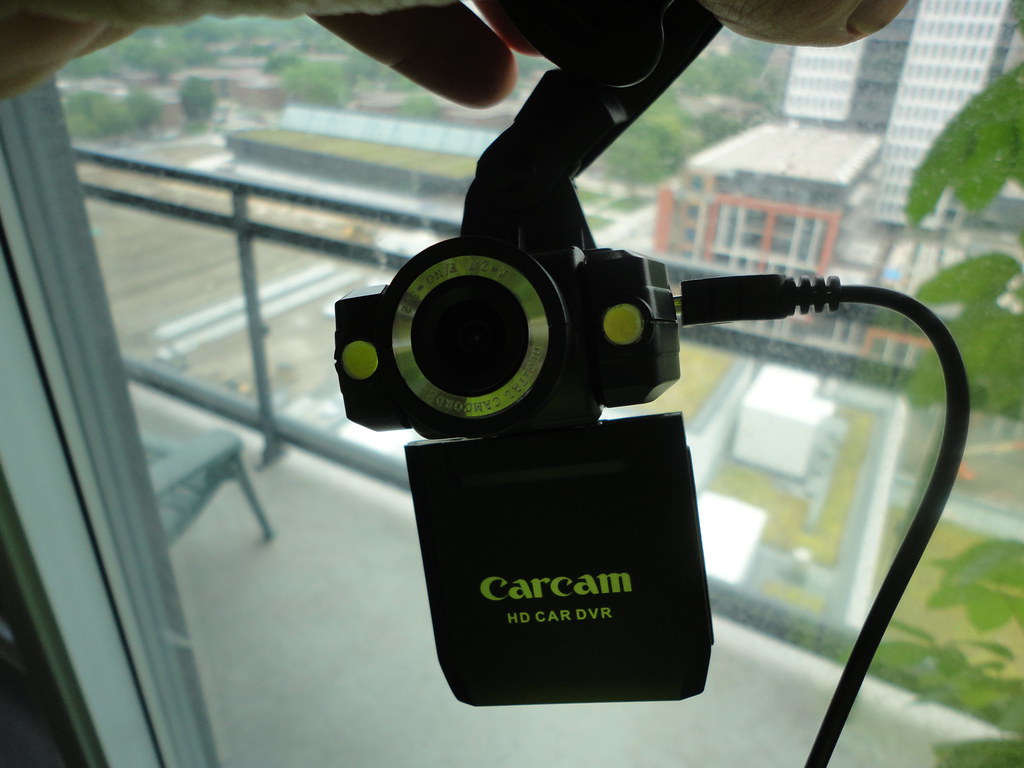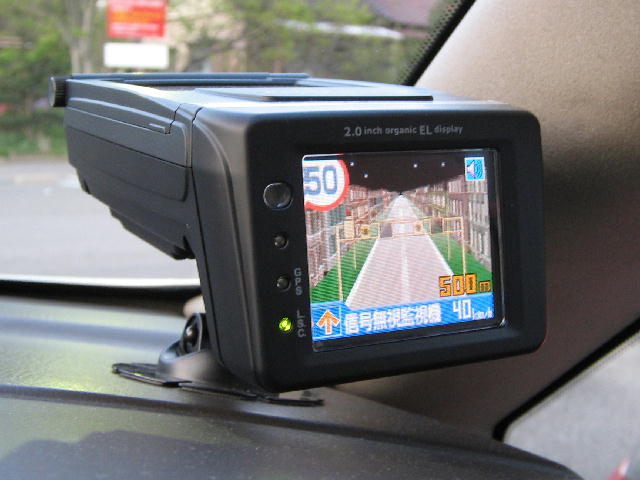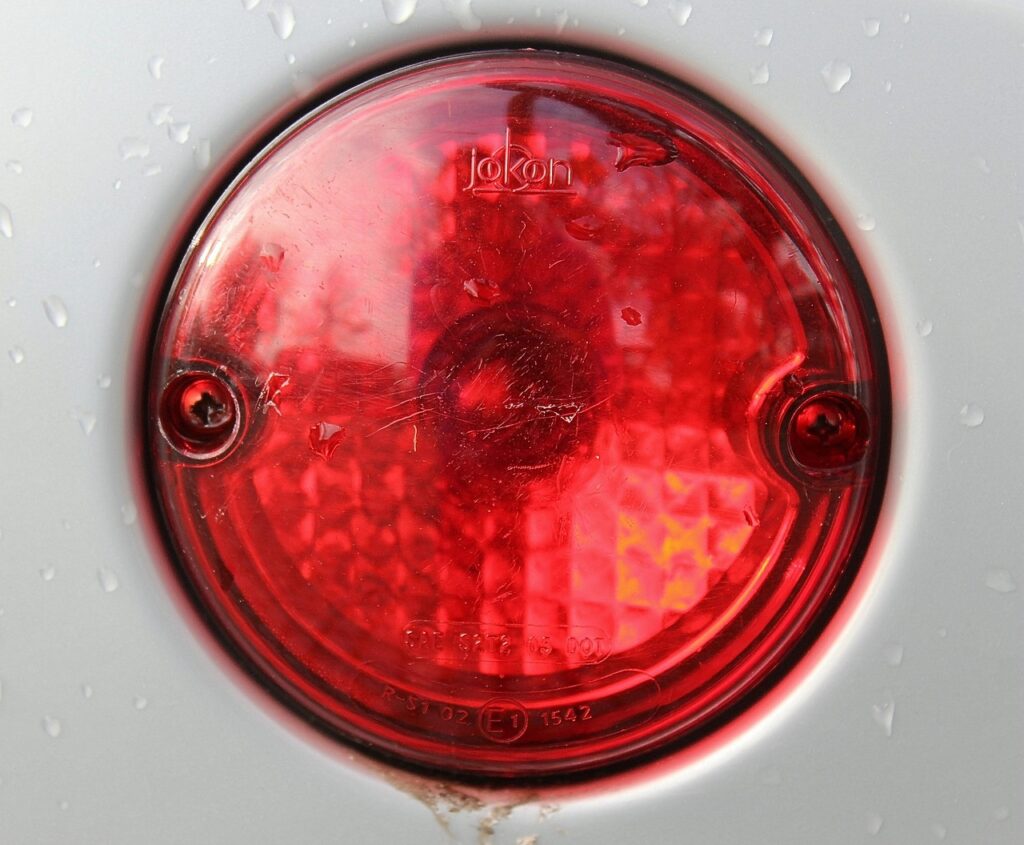In the modern age of automotive innovation, car safety has become a top priority for manufacturers, regulators, and consumers alike. While new vehicles are increasingly equipped with factory-installed safety technology—like automatic emergency braking, lane-keeping assist, and adaptive cruise control—millions of drivers are still commuting in older models that lack even the most basic electronic safety features. This disparity creates a significant safety gap for a large portion of the driving public, who might not be in a position to upgrade to a brand-new vehicle.
For these drivers, aftermarket upgrades offer an affordable and accessible way to bring their vehicles closer to modern safety standards. However, with every legitimate innovation comes a flood of flashy gimmicks and misleading products that claim to improve safety but deliver little more than aesthetic appeal or, worse, introduce new risks. Knowing the difference between what actually works and what just looks good on packaging is crucial—not only for your budget but also for your safety on the road. There is no shortage of marketing language aimed at safety-conscious drivers, with products often wrapped in buzzwords like “defensive driving aid,” “collision deterrent,” or “driver alert enhancement.” Yet, few of these claims come with scientific validation or support from the automotive engineering community, creating a minefield for consumers.
This article aims to cut through the noise and help you identify what’s worth investing in versus what to avoid. Whether you’re driving a reliable but aging 2007 Toyota Camry, a high-mileage Chevy Malibu, or a first-generation Ford Escape, you shouldn’t have to guess which upgrades are going to make a meaningful difference. We’ll start by covering five aftermarket safety upgrades that truly work—the kind that improve your situational awareness, prevent accidents, and give your vehicle a real functional edge in today’s driving conditions, all based on solid engineering principles and tested technologies.
1. **Blind Spot Detection Systems**
Blind spots are among the most persistent and dangerous challenges in everyday driving, especially in congested traffic and multilane roads. A momentary lapse in checking a side mirror can lead to severe collisions, posing a risk to both the driver and others on the road. Fortunately, aftermarket Blind Spot Detection Systems have become increasingly sophisticated and widely available, offering a vital layer of protection that many older vehicles inherently lack. These systems are not merely convenient; they are designed to prevent common and often severe accidents.
These systems utilize radar sensors mounted behind the rear bumper or ultrasonic detectors on the side panels to scan the areas alongside and slightly behind your vehicle. When another vehicle enters the monitored zone, the system alerts the driver via visual indicators on the side mirror and often with a chime or warning beep. This critical feedback serves as a second set of eyes, helping drivers avoid potentially catastrophic lane changes. Vehicles such as the Toyota Corolla, Nissan Altima, and Hyundai Elantra, especially older trims from the early 2010s that lack this feature, can benefit significantly from this aftermarket enhancement, closing a critical safety gap.
The installation process for these advanced systems, while requiring precision, is not overly invasive and can often be performed by a qualified professional. High-end kits like those from Brandmotion or Accele include everything needed, from radar modules to LED indicators, ensuring a comprehensive upgrade. These systems are typically integrated with a central control unit mounted discreetly inside the cabin, and once calibrated, they offer near-OEM functionality. They are particularly useful for larger vehicles like the Ford Explorer, Chevy Traverse, and Toyota Highlander, where the sheer size of the body naturally leads to more pronounced blind zones, making manual checks less reliable.
Drivers of older pickup trucks like the Dodge Ram 1500 (2012 model) or the Chevrolet Silverado 2011 also stand to gain significantly from these systems, especially since large mirrors alone may not fully compensate for limited peripheral awareness. Beyond enhancing safety in motion, many modern blind spot systems now incorporate cross-traffic alerts, which proves invaluable when reversing out of a crowded parking lot or a tight garage. In these scenarios, pedestrians and other vehicles often appear seemingly out of nowhere, creating high-risk situations. With alerts triggered by vehicles approaching from the sides, the driver is more empowered to avoid unexpected accidents, making parking and maneuvering safer for everyone. For parents or new drivers in the family, such real-time notifications add significant value by acting as a silent co-pilot that consistently monitors high-risk zones, fostering safer driving habits.
Compared to cheaper gimmicks like stick-on wide-angle mirrors or blind spot decals, a true radar-based system delivers consistent, accurate, and intelligent assistance that isn’t prone to human error or misinterpretation. The cost may range between $300–$700 for a quality installation, which, when considering the average repair cost of a side-impact collision and potential injury, is a more than justified investment. Furthermore, some insurance companies offer premium reductions for vehicles equipped with advanced safety features, even when installed post-purchase, providing an additional financial incentive. In essence, this isn’t just an upgrade; it’s a strategic move toward measurably safer driving and peace of mind on the road.
Read more about: Amidst Rising Costs: Unveiling the Top 10 New Cars Still Delivering Value in 2025

2. **Dash Cams with Advanced Driver Assistance Features**
Dash cameras have evolved far beyond their original function of simply recording the road ahead. What began as a tool for documenting incidents has transformed into a sophisticated safety device. The latest iterations of aftermarket dash cams come equipped with Advanced Driver Assistance Systems (ADAS), bringing high-level safety tech to vehicles that were never designed with these features in mind. These devices offer real-time alerts for lane departures, forward collisions, and pedestrian detection capabilities, features previously reserved for premium trims of vehicles like the Honda Accord Touring, Mazda 6 Signature, or BMW 3 Series. Now, even a 2010 Toyota Camry or Ford Focus can gain a cutting-edge safety advantage with the right camera system, democratizing access to crucial safety technologies.
One of the primary ADAS functions is the lane departure warning, which uses visual cues from the camera’s wide-angle lens to monitor the position of the car relative to lane markings. If the car begins to drift without an active turn signal, the system immediately alerts the driver through beeps or voice prompts. This is a game-changer for drivers on long commutes, who might experience fatigue or momentary distractions. Older models like the Volkswagen Jetta (2011) or Chevy Impala (2010), which often lack these integrated features, can significantly benefit from this technology, helping to prevent potentially dangerous lane excursions and keep the vehicle centered in its lane.
Complementing the lane departure warning is the forward collision warning, which functions similarly but focuses on the distance to the vehicle in front. If the system calculates that a rear-end collision is imminent based on relative speed, it sounds an alarm, giving the driver crucial extra seconds to react. Some advanced dash cameras even highlight the obstacle directly on screen, guiding the driver’s attention precisely where it’s needed most. This visual and auditory alert system can dramatically reduce the likelihood of a rear-end collision, a common type of accident, by providing timely warnings that a driver might otherwise miss due to inattention or blind spots.
One of the more underrated features found in these smart dash cams is driver fatigue detection. Models like the Vantrue N4 or Viofo A139 use sophisticated algorithms to monitor erratic steering patterns or suggest break times during long trips, proactively addressing the dangers of drowsy driving. Some even incorporate infrared cameras that detect subtle eyelid movement and facial orientation to determine if the driver is dozing off or losing focus. This is particularly helpful for ride-share drivers using vehicles like the Kia Optima or Hyundai Sonata, who often work long, irregular hours, where fatigue is a significant risk factor. The addition of such a safety feature can dramatically reduce the risk of late-night accidents caused by drowsiness or inattention, safeguarding both the driver and passengers.
Beyond their real-time preventative capabilities, another significant benefit of smart dash cams is what they offer after an incident occurs. Whether it’s a minor fender bender or a more serious crash, having high-quality video evidence can be the difference between a denied insurance claim and full compensation. In cases involving disputed liability—such as when driving older but reliable cars like the Subaru Legacy or Chrysler 300—the dash cam becomes your impartial witness, providing irrefutable proof of what transpired. These aren’t gadgets built for novelty; they are smart, practical, and potentially life-saving enhancements for any vehicle still on the road today, offering comprehensive protection before, during, and after a driving incident.
Read more about: Buyer Beware: 10 Flashy Coupes and Sedans That Turn into Bottomless Money Pits Past 80,000 Miles

3. **Tire Pressure Monitoring Systems (TPMS)**
While it may not be flashy, a Tire Pressure Monitoring System (TPMS) is one of the most practical and effective safety upgrades you can install on a vehicle. The condition of your tires is paramount to driving safety; improper tire pressure affects everything from braking distance and handling stability to fuel efficiency. More critically, it is a major contributor to tire blowouts on highways, which can lead to catastrophic accidents. Despite the undeniable importance of tire health, many older or budget cars—such as the 2008 Toyota Yaris, 2009 Honda Fit, or 2010 Ford Fusion—do not come equipped with an integrated TPMS. This makes aftermarket kits a vital addition for maintaining consistent tire safety, providing information that can prevent serious incidents.
Aftermarket TPMS kits typically come with pressure sensors that either screw onto the valve stems or are installed inside the tire, depending on the system’s design. These sensors then transmit readings wirelessly to a dedicated display unit, which can be conveniently mounted inside the car’s cabin. High-end kits go a step further by providing temperature monitoring, a critical feature for spotting early signs of overinflation or heat-related tire failure before they become dangerous. For daily drivers using cars like the Hyundai Accent or Chevrolet Aveo, this granular level of data can be the difference between a smooth, uneventful trip and a sudden, hazardous tire emergency on the highway. Additionally, many modern Bluetooth-enabled versions allow seamless integration with smartphone apps, giving users a clear, accessible view of their tire health at a glance.
More importantly, TPMS systems actively promote preventative maintenance by providing continuous, real-time feedback. By catching slow leaks, consistent underinflation, or uneven pressure distribution early, these devices help extend tire life and prevent dangerous handling conditions that might otherwise go unnoticed. This proactive approach significantly reduces the risk of blowouts and improves overall vehicle dynamics. Vehicles like the Jeep Liberty (2007) or Subaru Outback (2009), which are often used in snowy or rugged environments where tire traction and performance are absolutely critical, stand to benefit the most from such reliable monitoring. In challenging conditions, knowing your exact tire pressure can be a lifesaver.
Compared to outdated visual inspection habits, which are notoriously unreliable, or dubious “tire sealant gimmicks” that offer temporary and often incomplete solutions, a legitimate TPMS provides real-time, accurate monitoring that truly informs the driver. And because these systems are relatively inexpensive—with good models ranging from $80 to $150—they deliver one of the best returns on safety per dollar invested. Whether you’re driving cross-country in a Chevy Malibu or navigating city potholes in a Nissan Versa, TPMS empowers drivers to stay informed and proactive about tire integrity at all times, making it an indispensable safety upgrade. This small investment provides a significant boost to vehicle safety and driver confidence.
Read more about: Tech Geek’s ‘Unknown’ Code: Unlock Your Car’s Hidden Menu Instantly Without Ever Visiting the Dealership

4. **Backup Cameras and Parking Sensors**
Accidents that occur while reversing are far more common and potentially devastating than most people realize. Whether it’s backing into a stationary object like a pole, scraping a curb, or—worst of all—failing to see a small child or pedestrian behind the vehicle, these incidents are often preventable. This critical safety concern is why Backup Cameras and Parking Sensors have become standard equipment on many newer vehicles like the Honda CR-V, Toyota RAV4, and Mazda CX-5. However, for the millions of drivers operating older models, such as the 2006 Honda Pilot, 2008 Ford Escape, or 2009 Toyota Tacoma, aftermarket options offer an excellent and essential opportunity to bring their vehicle’s reversing safety into the 21st century.
Aftermarket backup cameras are typically mounted discreetly, often just above the rear license plate, to provide a wide-angle view of what’s directly behind the car. The video feed is then displayed on a dashboard-mounted screen or, in many popular options, seamlessly integrated into a replacement rearview mirror. These cameras are especially helpful in tight urban environments, crowded parking lots, and residential neighborhoods where visual obstructions are common and space is at a premium. Many aftermarket models even include dynamic parking lines, which intelligently shift with your steering input to guide you precisely where the car will go, making parking intuitive and accurate. This feature is a game-changer for newer drivers or those driving larger vehicles with historically poor rearward visibility, such as the GMC Yukon (2009) or Toyota Sequoia (2010), significantly reducing stress and increasing safety.
Parking sensors further enhance reversing safety by offering real-time distance alerts that complement the visual information from the camera. These ultrasonic sensors, typically installed into the rear bumper, detect objects in the vehicle’s path and communicate proximity by increasing their beeping frequency as the vehicle approaches a hazard. This auditory feedback provides an additional layer of warning, particularly useful when visibility is compromised. For minivans like the Dodge Grand Caravan or aging sedans like the Buick LaCrosse, this upgrade can prevent countless low-speed collisions that often result in hundreds of dollars in body repair costs. Combined with a camera, the system provides both visual and auditory protection—a highly effective one-two punch for navigating blind spots and avoiding obstacles while backing up.
One of the most compelling aspects of these systems is their scalability, meaning there’s an option for virtually every budget and need. Whether you simply want a basic camera-only setup for improved rear visibility or a more comprehensive surround-view system with multiple cameras and proximity sensors, the aftermarket provides diverse solutions. Unlike novelty parking aids—such as fake “beeping” modules or excessively flashy reverse lights that offer no real utility—true backup assistance technology provides measurable safety benefits. For drivers who prioritize their family’s security, frequently navigate tight spaces, or simply want to avoid costly dents and scrapes, this upgrade is both practical and immediately impactful, offering invaluable peace of mind every time you shift into reverse.
Read more about: Buyer Beware: 10 Flashy Coupes and Sedans That Turn into Bottomless Money Pits Past 80,000 Miles
5. **Electronic Stability Control (ESC) Retrofit Kits and Performance Traction Aids**
While often overlooked in conversations about aftermarket upgrades, Electronic Stability Control (ESC) is widely considered one of the most significant safety advancements in automotive history. Its primary function is to help drivers maintain control of their vehicle during extreme steering maneuvers, slippery road conditions, or panic stops, situations where loss of control can lead to severe accidents. ESC systems work by continuously monitoring vehicle dynamics and, when necessary, applying braking to individual wheels and reducing engine power to prevent dangerous oversteering (where the rear of the car slides out) or understeering (where the front of the car plows wide). While federal regulations made ESC mandatory for all new vehicles sold in the U.S. from 2012 onward, older cars, including once-popular models like the 2005 Toyota Camry, 2006 Nissan Sentra, and 2007 Ford Taurus, often came without it, leaving a large number of drivers without this crucial life-saving feature.
Modern aftermarket ESC solutions, while not identical to fully integrated OEM systems, have evolved considerably. Advanced traction control and brake vectoring kits exist that can offer a similar effect, especially when installed alongside performance ABS modules. These sophisticated systems typically include essential components such as yaw sensors, which detect rotational movement around the vehicle’s vertical axis, wheel speed detectors to monitor individual wheel rotation, and electronic brake controllers that manage braking force. When combined and properly calibrated, these components work in concert to simulate the critical functionality of factory ESC, particularly in low-grip conditions like rain, snow, or gravel, where maintaining traction is paramount. Vehicles like the Mazda3 (pre-2010 models) and older Volkswagen Golf variants that were built before ESC became standard are excellent candidates for these specialized kits.
While a full ESC retrofit may require professional calibration and fine-tuning, the performance and safety benefits can be dramatic, fundamentally transforming an older vehicle’s handling characteristics in challenging situations. For budget-conscious drivers or those not yet ready for a full ESC retrofit, there are more affordable, yet still highly effective, performance traction aids that deliver tangible safety improvements. For instance, aftermarket limited-slip differential systems or torque-biasing devices enhance traction in both front-wheel and rear-wheel drive setups by ensuring power is distributed effectively to the wheels with the most grip. These are especially valuable in sports sedans and older performance coupes like the BMW 3 Series (E46), Acura RSX, or Ford Mustang GT (2005), which can be prone to wheel spin during aggressive acceleration.
In snowy climates or on loose surfaces, these upgrades can help prevent wheel spin during acceleration, greatly improving vehicle stability and reducing the risk of fishtailing or sliding through turns. Though more commonly associated with performance upgrades for enthusiasts, these aids also provide serious safety value when driving in less-than-ideal road conditions, translating directly into better control and accident prevention. What truly sets these upgrades apart from gimmicky traction devices—like magnetic “grip bracelets” for tires or snake oil-style additives claiming to enhance vehicle balance—is that they are firmly grounded in real automotive engineering and physics. True ESC systems interact intelligently with the vehicle’s computer and brake network to intervene only when necessary, making them a smart, passive layer of safety that doesn’t rely on driver input during a crisis.
Combined with good quality tires, these retrofits can elevate an older vehicle’s behavior in critical situations to levels comparable to modern compact SUVs like the Honda HR-V or Subaru Crosstrek, providing a significant boost in safety. And while the cost and complexity of installation are typically higher than simpler upgrades, for those who routinely drive in inclement weather, mountainous terrain, or simply desire the highest possible level of dynamic safety from their older vehicle, the benefits are often well worth the investment. It’s an investment in control, stability, and ultimately, peace of mind on the road.
In our exploration of automotive safety, we’ve rigorously examined upgrades that genuinely protect drivers and passengers. However, the automotive aftermarket is also rife with products that masquerade as safety enhancements but often do little more than offer aesthetic appeal or, worse, introduce new risks. These ‘gimmicky’ accessories, despite their often-flashy marketing, frequently lack scientific validation or support from the automotive engineering community. They can mislead consumers, tempting them to invest in products that provide zero practical safety value. Our goal in this section is to unmask these five common culprits, explaining why they fail to deliver on their promises and how they might compromise your ability to drive safely.

6. **Steering Wheel Knobs (Suicide Knobs)**
Steering wheel knobs, often colloquially referred to as “suicide knobs,” are aftermarket attachments designed to assist with quicker steering, particularly with one hand. These devices are commonly observed on older trucks, vans, or vehicles such as the 1998 Ford E-Series or 1985 Chevy Blazer, and are marketed for their supposed ease of use during low-speed maneuvers like parking. However, despite any perceived convenience or nostalgic charm, steering wheel knobs pose significant safety concerns that far outweigh any potential benefits for the average driver.
Primarily, steering wheel knobs actively encourage and facilitate one-handed driving, which severely compromises a driver’s ability to maintain control and react effectively during emergency situations. Optimal driving technique mandates both hands on the steering wheel, providing maximum responsiveness, precision, and the ability to execute sudden evasive maneuvers. By limiting a driver’s range of hand movement, these knobs directly increase the risk of losing control, particularly when rapid steering adjustments are critical for avoiding an accident.
Beyond compromised control, these knobs also present physical injury risks. They can snag on clothing, jewelry, or even interfere with the proper functioning of a vehicle’s airbag system. In the event of an airbag deployment, a knob rigidly affixed to the steering wheel could impede the airbag’s inflation or cause severe hand and wrist injuries. Some drivers have also reported that the knob can unexpectedly rotate or shift, leading to unintended steering inputs at crucial moments, which can be disorienting and dangerous. For example, a driver using such a knob on a 1995 Dodge Ram cited difficulty in correcting a skid due to restricted hand movement, highlighting the inherent danger.
It is also important for consumers to be aware that many jurisdictions have regulations that restrict or outright ban the use of steering wheel knobs on passenger vehicles due to these documented safety hazards. Furthermore, insurance companies may take a negative view of these modifications during accident investigations, potentially complicating claims. While certain commercial drivers with specific physical needs or vehicle types might still employ them, for the vast majority of drivers, these knobs are nothing more than a dangerous gimmick offering false convenience at a direct expense to safety and control.
7. **Decorative LED Interior Lighting**
Custom LED lighting strips and various colorful interior illumination kits have become exceptionally popular within the automotive tuning and customization community. Enthusiasts frequently install these in vehicles such as the 2010 Volkswagen Jetta, 2007 BMW 3-Series, or 2005 Honda Civic, with the primary aim of creating a personalized, vibrant, and aesthetically pleasing cabin atmosphere. While the visual appeal of these modifications can be undeniable and they may satisfy a desire for personalization, it is crucial to understand that these decorative interior lights offer no contribution to driving safety; in fact, they may actively reduce it.
One of the most significant drawbacks of bright or flashing interior lights is their potential to distract drivers, particularly during nighttime driving conditions when the human eye is far more sensitive to light contrasts. Intense glowing LEDs inside the cabin can generate distracting reflections or glare on the windshield, side windows, and rearview mirrors. This impairment of external visibility can make it harder for the driver to clearly perceive the road ahead, surrounding traffic, or critical environmental cues, potentially delaying reaction times or causing momentary lapses in attention during moments when full focus is paramount.
Furthermore, beyond direct visual distraction, improperly installed lighting kits can introduce a host of practical problems. These issues may include interference with the vehicle’s intricate electrical systems, leading to potential electrical shorts, persistent battery drain, or even more severe malfunctions. In some cases, poorly placed lighting kits can obscure or directly compete with essential dashboard indicators and warning lights, making it significantly harder for the driver to notice vital alerts such as a check engine light, oil pressure warning, or airbag malfunction indicators. Owners of vehicles like the Nissan Altima or Ford Focus, for instance, have reported increased dashboard confusion after installing aftermarket interior LED kits, demonstrating a clear safety detriment.
In addition to the inherent safety risks, overly bright or distracting interior lighting may also violate local vehicle regulations concerning vehicle illumination, which can attract unwanted attention from law enforcement and result in fines. While the aesthetic enhancement these lights provide may be highly valued by some, decorative LED interior lighting ultimately remains a purely gimmicky accessory. It offers no genuine safety benefit and introduces a range of potential downsides—from driver distraction and reduced visibility to electrical interference and legal issues—that overwhelmingly negate any perceived style points.
Read more about: Oklahoma’s Enduring Architectural Legacy: A Deep Dive into the State’s Iconic Styles

8. **Radar Detectors and Laser Jammers**
Radar detectors and laser jammers are aftermarket gadgets designed with the singular purpose of alerting drivers to the presence of speed enforcement equipment, such as police radar guns or laser speed traps. Models like the Valentine One radar detector or laser jammers are popular among drivers who wish to avoid speeding tickets. While these devices provide an early warning against speed monitoring, their impact on actual driving safety is highly debatable and often detrimental, as they are not designed to improve vehicle control or driver awareness in the way legitimate safety upgrades do.
The fundamental flaw in relying on radar detectors and laser jammers for ‘safety’ is that they encourage a reactive rather than proactive approach to driving. Instead of promoting consistent, safe driving habits by adhering to posted speed limits and exercising caution, these devices can inadvertently incentivize drivers to push speed limits and then slow down abruptly only when alerted to enforcement. This erratic driving behavior, characterized by sudden acceleration and deceleration, can create hazardous situations for other drivers on the road who may not anticipate such unpredictable changes in speed. It directly undermines the predictability that is essential for safe traffic flow.
Beyond encouraging potentially unsafe driving habits, the use of these devices can also lead to increased distraction. Drivers who constantly monitor their radar detector’s alerts or adjust laser jammer settings may divert their attention from the road, traffic conditions, and other critical driving tasks. This split attention, even for momentary glances at the device, can significantly impair reaction times and situational awareness. In a Consumer Reports evaluation of various in-car gadgets, it was noted that any device requiring active driver monitoring, especially one that induces anxiety about speed enforcement, can detract from the primary task of operating the vehicle safely.
Furthermore, the legality of these devices varies significantly by jurisdiction. While radar detectors might be legal in some areas for passenger vehicles, laser jammers are often illegal and can carry substantial penalties. Relying on such devices can lead to legal issues and fines, which are entirely separate from any genuine safety benefits. The marketing of these gadgets often implies a form of ‘smart driving’ or ‘driver enhancement,’ but in reality, they serve to circumvent laws rather than promote safer practices. This puts drivers at risk not from road hazards but from legal consequences.
Ultimately, radar detectors and laser jammers do not enhance the vehicle’s inherent safety mechanisms, nor do they improve driver skill, awareness, or preventative accident avoidance. Instead, they represent a costly investment in a cat-and-mouse game with law enforcement, rather than a genuine commitment to responsible and safe driving. For the consumer focused on true safety, resources are far better allocated to proven technologies that actively prevent accidents and protect occupants, rather than those that merely attempt to evade legal consequences.
9. **Oversized Spoilers for “Downforce”**
Oversized spoilers, particularly those that extend significantly above the vehicle’s trunk lid, are often marketed as performance-enhancing accessories designed to create “downforce.” The claim is that by pressing the rear of the car onto the road at high speeds, these spoilers improve traction and stability. Enthusiasts install them on a wide range of vehicles, from compact sedans to sports coupes, purely for a perceived aggressive aesthetic or a misplaced belief in their functional benefit for everyday driving. However, for the vast majority of road users, these accessories offer no practical safety advantage and often introduce new liabilities.
For a spoiler to generate meaningful downforce, a vehicle must be traveling at extremely high speeds, typically well beyond legal limits on public roads. At speeds encountered in typical highway or urban driving, an oversized spoiler is largely ineffective in improving traction. Instead, it acts merely as a decorative, non-functional addition. The engineering required for effective aerodynamic aids is complex, involving precise wind tunnel testing and integration with the vehicle’s overall design, which a generic aftermarket spoiler cannot replicate. Therefore, any perceived increase in stability from such an addition for the average driver is purely psychological, not a genuine safety improvement.
Crucially, an ill-fitting or poorly designed oversized spoiler can actually compromise vehicle safety. If it disrupts the car’s natural aerodynamics at speed, it can introduce unexpected instability or turbulence, potentially making the vehicle harder to control. Additionally, large spoilers can significantly impede rearward visibility, creating dangerous blind spots that drivers must contend with. This is particularly problematic when reversing or changing lanes, as the obstruction can prevent the driver from seeing pedestrians, other vehicles, or obstacles, thereby increasing the risk of an accident. Unlike a functional backup camera or blind spot monitor, a spoiler offers no compensatory safety feature.
Furthermore, the structural integrity of an aftermarket spoiler and its mounting to the vehicle are often not designed to withstand high stresses, potentially leading to detachment at speed. Such an event would not only damage the vehicle but could also create a dangerous road hazard for other drivers. The aesthetic appeal of these spoilers is a matter of personal preference, but from a Consumer Reports perspective, they represent a significant investment that provides no verifiable safety benefit, may impair visibility, and can even introduce new risks without delivering on their performance claims for typical driving conditions. This makes them a prime example of a gimmicky accessory to avoid.
10. **Fake “Brake Light Flashers” and Overactive Strobe Modules*
Fake “brake light flashers” and overactive strobe modules are aftermarket products designed to modify a vehicle’s rear lighting, typically by causing brake lights to flash rapidly or emit strobe-like patterns upon activation. Proponents of these devices often claim they enhance safety by making the braking vehicle more noticeable to following drivers, thereby reducing the risk of rear-end collisions. While increased visibility is indeed a legitimate safety goal, these particular methods of achieving it are deeply flawed, lack scientific validation, and can be counterproductive, potentially leading to confusion and increased hazards on the road.
The primary problem with these flashing or strobing brake lights is that they can be disorienting and distracting to other drivers. Rather than providing a clear and unambiguous signal of braking, rapid or irregular flashing can create visual clutter that confuses the driver behind. This confusion can delay their reaction time, as they struggle to interpret the brake signal amidst the distracting flashes. In scenarios where clear, immediate communication is vital—such as sudden stops or heavy traffic—a confusing light pattern can actually increase the likelihood of a collision, directly undermining the supposed safety benefit.
Moreover, consistent and standardized vehicle lighting signals are crucial for road safety. Drivers are accustomed to specific visual cues, and altering these can disrupt established expectations and responses. Overactive strobe modules, in particular, can be highly irritating and even cause momentary vision impairment or discomfort for following drivers, especially at night or in adverse weather conditions. This is not about making a vehicle ‘more visible’ in a beneficial way; it’s about introducing an anomalous visual stimulus that deviates from regulated standards, which are in place to ensure clarity and consistency for all road users.
Finally, the legality of these brake light modifiers is highly questionable and often outright prohibited by vehicle safety regulations in many regions. Automotive lighting standards are meticulously defined to ensure proper function and avoid confusion. Installing devices that deviate from these standards can result in legal repercussions, including fines and orders to remove the modification. Unlike advanced, integrated braking systems that genuinely shorten stopping distances or provide collision warnings, these flashing modules are purely aesthetic or misguided attempts at safety that ultimately introduce more problems than they solve. They are gimmicks that prioritize a flashy appearance over functional clarity, offering no legitimate safety improvement and posing a risk to both the modifying driver and others sharing the road.
When it comes to vehicle safety, discerning between genuine advancements and mere illusions is paramount. While some aftermarket accessories offer tangible, life-saving benefits, others are little more than costly distractions or, worse, introduce real hazards. Empowering yourself with knowledge and choosing wisely means investing in proven technologies that enhance your situational awareness, prevent accidents, and truly give your vehicle a functional edge—not in flashy gimmicks that promise much but deliver little more than risk. Your safety, and the safety of those around you, depends on informed decisions, not on marketing hype.







